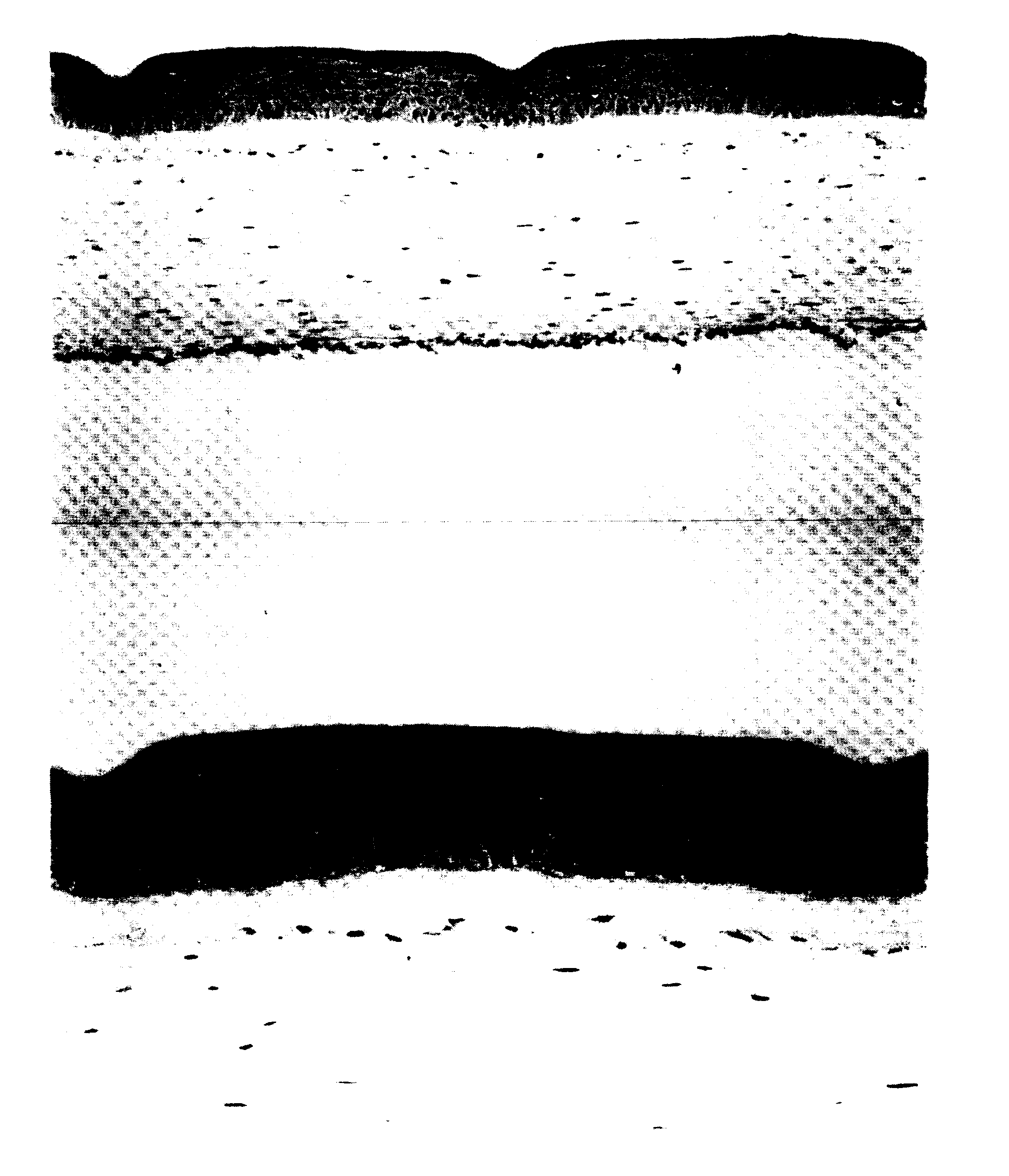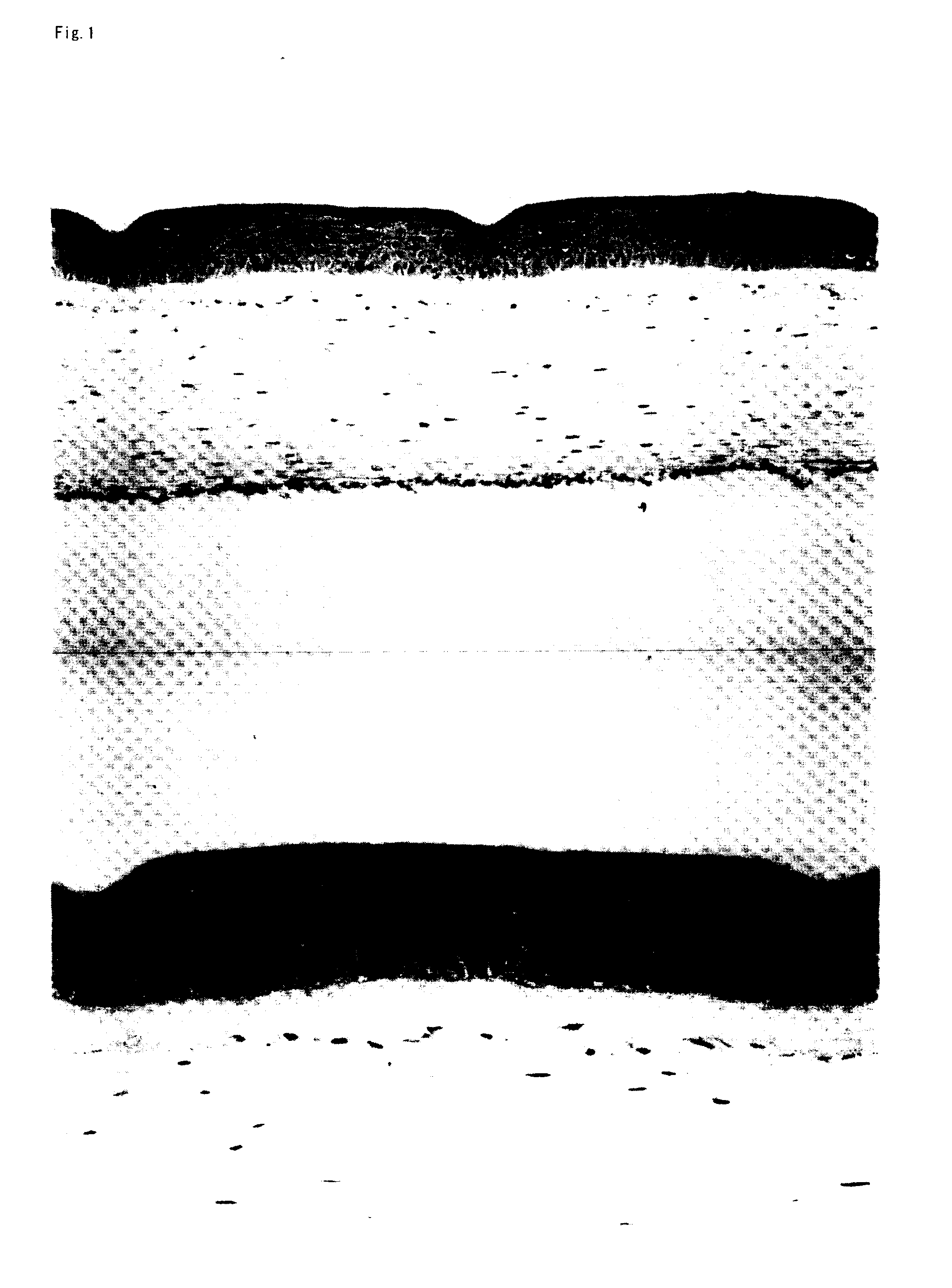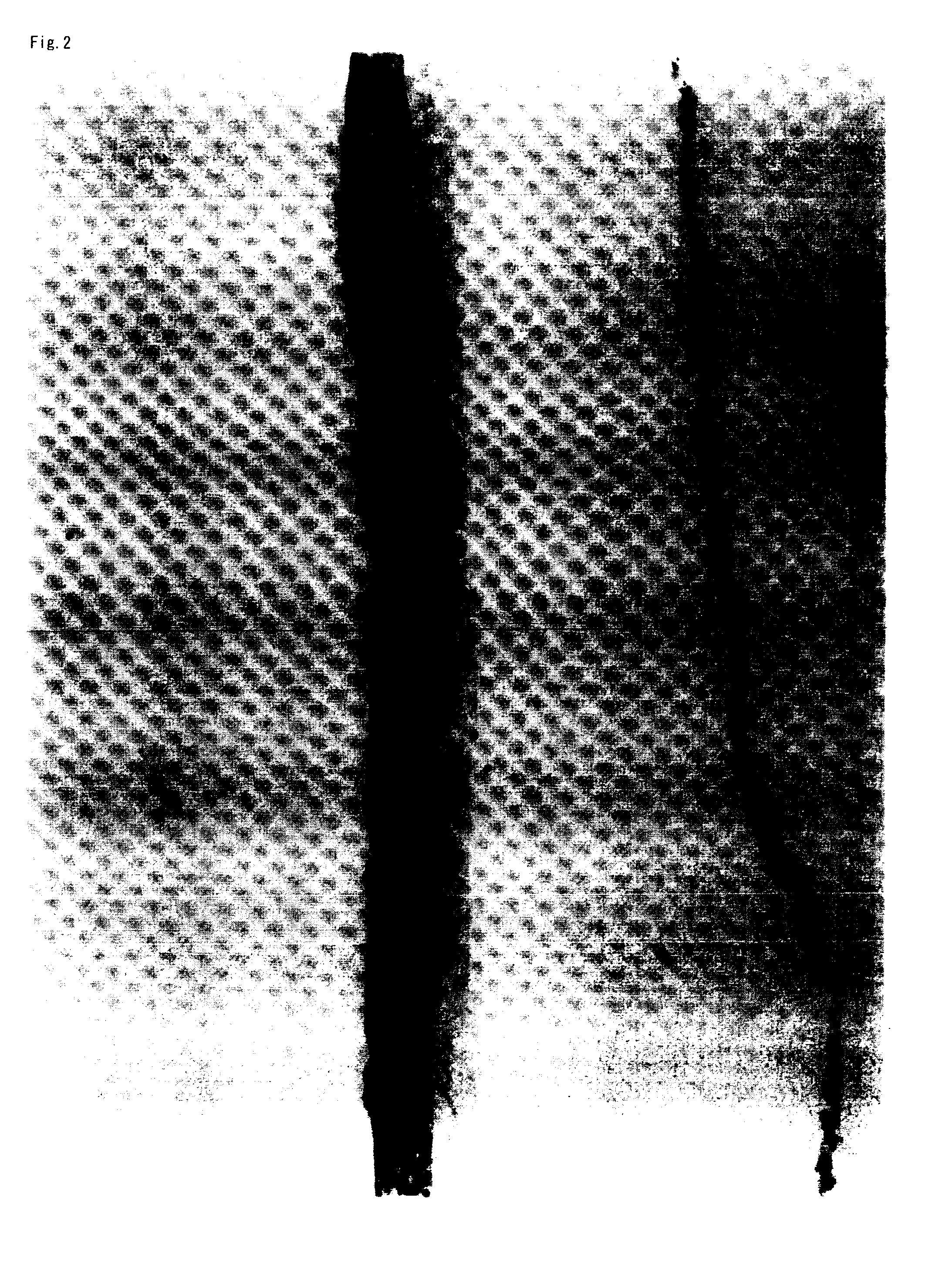Biological Tissue Sheet, Method Of Forming The Same And Transplantation Method By Using The Sheet
a technology of biological tissue and tissue plate, which is applied in the field of biological tissue plate, can solve the problems of corneal intransparency, limited collection size, and long time required to generate epithelium, and achieve excellent culture substrate, excellent proliferation of epidermal keratinocytes, and good cell migration ability.
- Summary
- Abstract
- Description
- Claims
- Application Information
AI Technical Summary
Benefits of technology
Problems solved by technology
Method used
Image
Examples
example 1
Production of Three-Dimensional Cultured Skin Sheet (Cultured Epidermal Sheet) Using Amniotic Membrane
1. Preparation of Amniotic Membrane
[0091] 1-1. Collection of Amniotic Membrane
[0092] After giving a pregnant woman who does not have a systemic complication and would undergo cesarean section sufficient informed consent together with an obstetrician in advance, amniotic membrane was obtained at the time of the cesarean section in the operation room. The operation was carried out cleanly. In accordance with the operation work, the operators washed hands, and then wore a special gown. Before delivery, a clean vat for obtaining amniotic membrane and physiologic saline for washing were prepared. After delivery, the placenta tissue was transferred to the vat and amniotic membrane tissue was manually detached from the placenta. A portion where amniotic membrane and placenta were strongly attached to each other was separated from each other with scissors.
[0093] 1-2. Treatment of Amniot...
example 2
Production of Three-Dimensional Cultured Skin Sheet
Cultured Epidermal Sheet
In the Case Where Collagen Gel is not Used
1. Collection of Amniotic Membrane and Epidermal Keratinocyte
[0114] Amniotic membrane and epidermal keratinocytes were prepared by the same procedure as described in Example 1.
2. Seeding of Keratinocytes
[0115] Preserved amniotic membrane is washed with PBS twice and further washed with a culture solution for keratinocytes once. The amniotic membrane is attached to the bottom surface of a culture insert with the side of substantial cells facing downward. The keratinocytes that have been prepared in advance are detached from the dish and collected by using trypsin-EDTA. The keratinocytes are subjected to centrifugation at 1000 rpm for five minutes to remove the supernatant. The cells are suspended so that the concentration becomes 200 million cells / 0.25 ml. The cell suspension (0.25 ml) is seeded to the amniotic membrane inside the culture insert, transferred to a...
example 3
Production of Three-Dimensional Cultured Corneal Epithelial Sheet Using Amniotic Membrane
1. Preparation of Amniotic Membrane
[0118] Amniotic membrane was prepared by the same procedure as described in Example 1.
2. Preparation of Corneal Epithelial Cell
[0119] 2-1. Procurement of Cornea
[0120] Donor corneas were purchased from Northwest Lions Eye Bank (Seattle, USA).
[0121] 2-2. Serum Free Culture Method of Corneal Epithelial Cells
[0122] Cornea is transferred to a petri dish containing Dulbecco's phosphate buffer (PBS) and the limbus is cut into strip with the size of 2 to 3 mm×2 to 3 mm by using a surgical knife under stereoscopic microscope. The limbus strip is washed with PBS several times and was sterilized by dipping it into 70% ethanol for one minute. The strip is washed with PBS, dipped in Dispase solution (Dispase II, Goudou Shusei, 250 units / ml, Dulbecco's Modified MEM medium; DMEM) and stood still overnight (18 to 24 hours) at 4° C. On the following day, by using forceps...
PUM
| Property | Measurement | Unit |
|---|---|---|
| turnover time | aaaaa | aaaaa |
| size | aaaaa | aaaaa |
| temperature | aaaaa | aaaaa |
Abstract
Description
Claims
Application Information
 Login to View More
Login to View More - R&D
- Intellectual Property
- Life Sciences
- Materials
- Tech Scout
- Unparalleled Data Quality
- Higher Quality Content
- 60% Fewer Hallucinations
Browse by: Latest US Patents, China's latest patents, Technical Efficacy Thesaurus, Application Domain, Technology Topic, Popular Technical Reports.
© 2025 PatSnap. All rights reserved.Legal|Privacy policy|Modern Slavery Act Transparency Statement|Sitemap|About US| Contact US: help@patsnap.com



